–Sonam Sinha, Raghav Pachouri
In the last five years, close to 31GW of coal power installed capacity has been added to India’s electricity generation capacity mix. However, due to various reasons ranging from low demand, coal, and other fuel shortages, amongst others, the overall annual PLF of coal-fired power plants was in the band of 55-58%. This means that around 42-45% of the generation was either not available or not utilized. Out of the 45% generation loss, around 25% accounted for forced outages which include- unit level technical issues, reserve shut down (RSD), coal & other fuel shortages, grid problems, no Power Purchase Agreement (PPA), etc[1]. The balance of 20% losses is due to planned outages (4-6%) and partial loading for various technical and non-technical reasons.
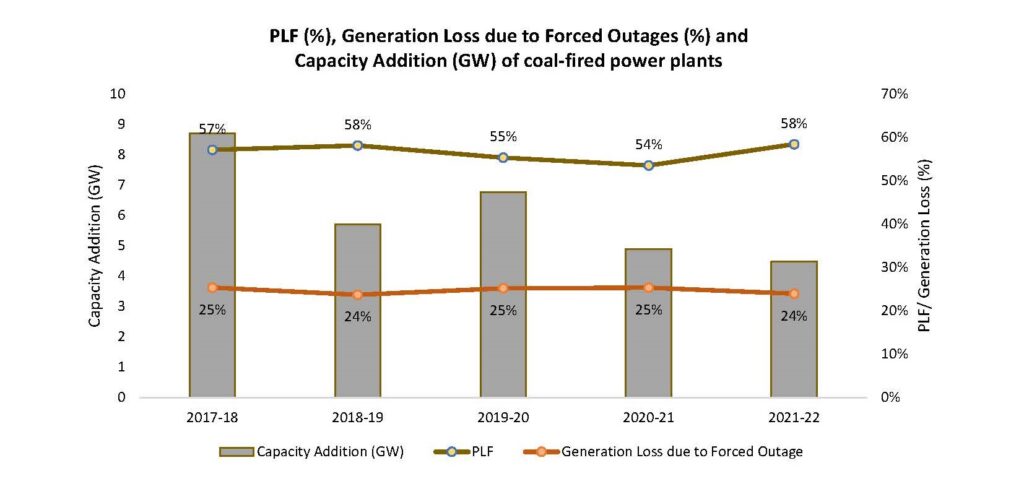
Deep dive into various reasons for forced outages
By and large the major reasons for forced outages for across 735 operational plant units for the period of 2017-18 to 2021-22, was due to technical reasons accounting for about 10-12% of generation loss, Reserve Shut Down (RSD) being the second major reason for forced outages accounting for ~7% and followed by coal shortage accounting for ~5% of generation loss, refer to figure 2.
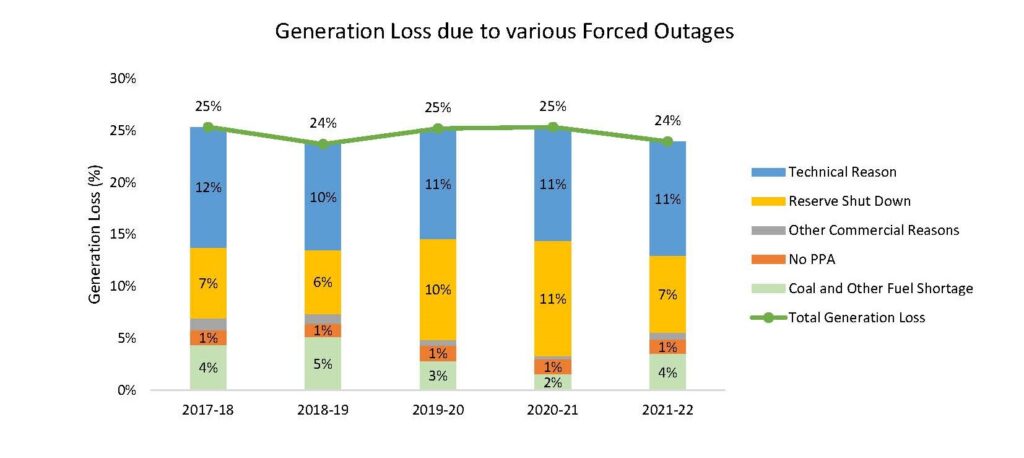
A sudden spike in RSD and overall forced outages in the years 2019-20 and 2020-21 could be attributed to low demand requirements in these years due to the Covid-19 pandemic. During the same period, the PLF of coal plants also dipped to 54% from the previous years’ value of 58-60%. The scatter plot in Figure 3 also supports the above hypothesis presented for RSD and overall higher outages in 2020-21. The outages due to no PPA, and other commercial reasons were more or less the same throughout the years.
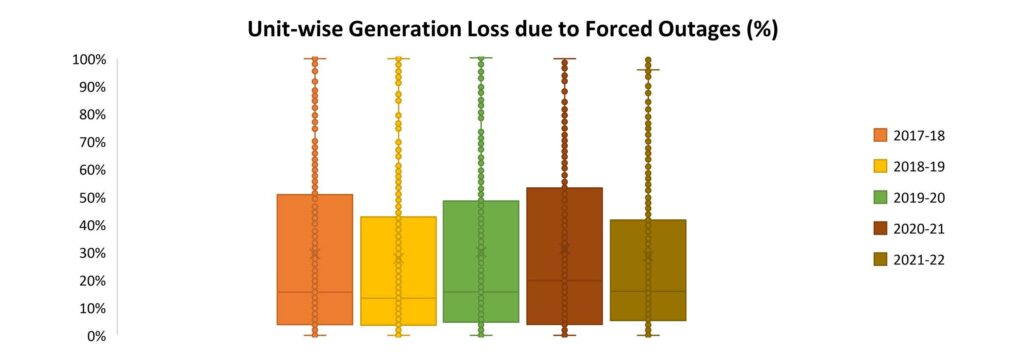
Sector-wise / Ownership based forced outages
The share of generation loss due to forced outages of coal-fired power plants owned by the central, state, and private sectors for the year 2021-22 is shown in Figure 4. The private sector suffers the maximum generation loss (11%), followed by the state sector (9%) and the central sector (4%). The major contributing reason for forced outages are technical in nature, followed by RSD and coal shortages in all sectors. The central sector of coal-fired power plants experienced the lowest generation loss. Central sector plants being the most efficient among all others have only 2% of generation loss due to technical faults, whereas state-owned and private plants suffered 5% and 4% of the generation loss respectively. Another interesting fact is that the loss due to coal shortage and RSD was least in central plants and highest in private plants. This pattern of generation loss due to forced outages in all the sectors has been similar during the preceding years.
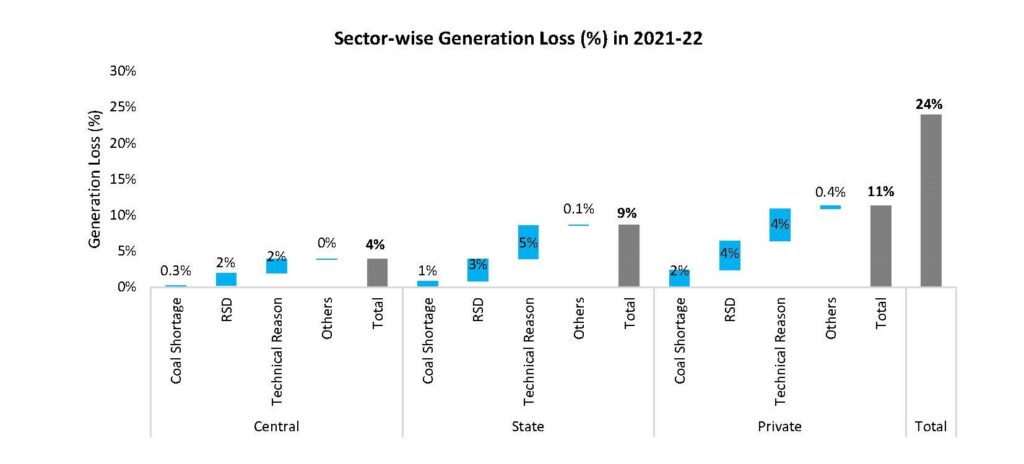
Coal and other fuel shortage impacting generation reliability during the rainy season
The generation loss due to coal shortage begins in July and peaks in October every year (shown in Figure 5). In the last 5 years, the maximum generation loss due to coal shortage was in Oct 2021 with 12 Billion Units (BU), followed by Oct 2018 with 11 BU. The maximum outages have occurred during the post-monsoon and return monsoon season due to mining difficulties, wet coal, the absence of surplus stock, and the increase in electricity demand in these months. Further, severe rainfall also hinders the transport networks, which thereby slows down the supply of coal to power plants.
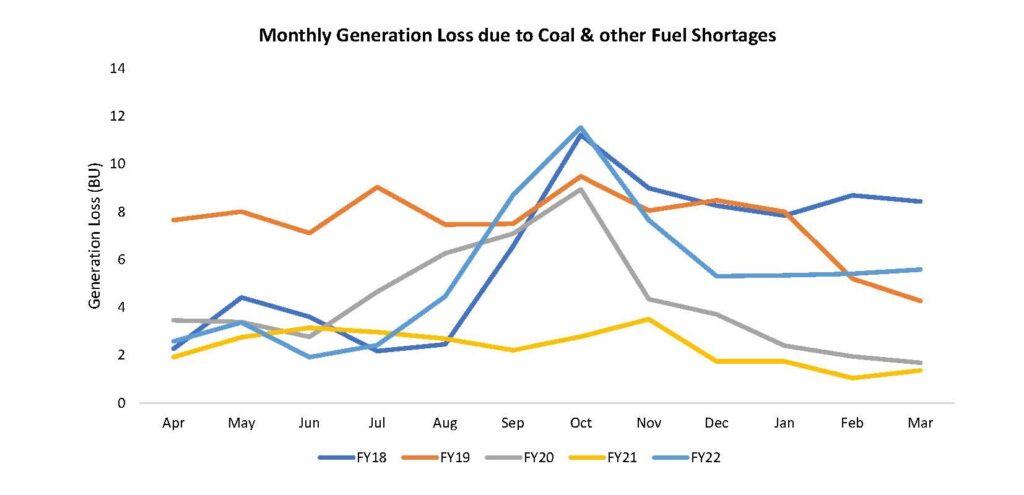
The generation loss due to reserve shutdown and no PPA collectively contribute to approximately 7-8%, which entirely depends upon the electricity demand. The technical losses which are in the range of 10-12% should be reduced by adopting a well-planned maintenance schedule including both preventive and predictive maintenance. The non-availability of condition-based routine maintenance and improper spare planning leads to high outage time during the breakdown. These outages can be planned during the monsoon and post-monsoon season when the coal shortage outages are high.
Furthermore, better planning in terms of coal production, despatch, and storage at the mine level as well as at the plant level is required prior to monsoon, to reduce the coal shortage losses during subsequent months.
[1] As per the Forced Outage definition defined in Section 4 of “CEA Thermal Performance Review Report”.




